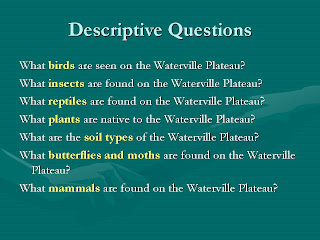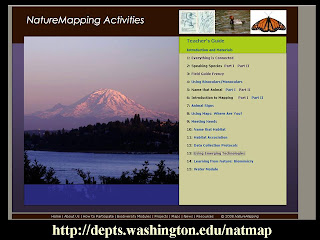




The 3rd grade entomologists started thinking about insects by making models. Then they learned the scientific name and characteristics of the 8 orders. After they chose their favorite order, the students made posters to show what they learned. This orthoptera picture was made by one of our deaf students named Colt. Last year our class made large computer posters for the orders. To find out what insects live in the Waterville Plateau, they will do a bioblitz on the schoolgrounds and people will also bring in insects. Students made up a song to help them remember the insects order. The song will be placed on a podcast.
Nolan:
For years I’ve heard about the 4th grade horny toad study because my dad is one of the cooperating farmers. I remember the first day he brought me home a horny toad. It looked like he had a bucket of dirt, but the horny toad was buried under the dirt. They are so well camouflaged, they look just like dirt. Do you ever see horny toads at your place, Nolan?
Yeah, I see a lot in the summer in the field above my house. They’re usually in a ditch by an old fence that is on north side of the field. One time I kept one in captivity for 2 months.
Elizabeth
Desi told us that she kept one in captivity for a whole winter. It was an adult and could eat mealworms.
Kelsey:
Two summers ago, my mom found one in our front yard in town. All the kids on the block came over and we put her into a big washtub under a tree. We shook some ants from the tree down for her to eat. The next morning she had 9 live babies and they started eating ants right away. We called Mrs. Petersen right away and she came over and took pictures.
Nolan: Now that we are the official herpetologists of the school, we will need to fill out data sheets for each of our horny toad sightings and the other reptiles we find. We are also busy writing 3 field guide pages for horny toads, western rattlesnakes and the skink which are common to our area. Some of us will draw pictures for the mural.
The fifth grade class will be studying geology and soils. We will also be taking many trips. One of these trips is the trip to Douglas Creek where we will be studying soil shifting, erosion, human impact on the area and doing sit spots. I have learned much about soils from my dad, Chad Kruger, because as a scientist he works on direct seeding and soil conservation. Another one of the trips we will be taking will be to Dry Falls where we will be studying about the ice age and the Missoula floods. We will also be watching pre-trip videos and drawing land formationsl.
Kelsey, have you noticed all the different wildflowers growing in the field by the cemetary?
Yes, and I know that the 6th grade will be going out to collect samples there, in Pine Canyon and at Douglas Creek. They want to find out what grows naturally so we can plant those things in our native plant garden at the school.
They will also be trying to find out what kinds of plants are needed by the animals who live on the plateau.
Kalah
The second grade is learning to find their own homes on terrain Navigator. 4th graders help farmers locate horny toad sightings on Arview and By the time students are in the 6th grade, they are locating their own data for plant sightings on ArcView mapping software.
Jessica:This is a picture of Pine Canyon. I am in the 7th grade and we are one of the classes going down to Pine canyon. We go down to the canyon to; collect plants, take photo points, measure slopes, and collect scat. I am 1 of the 2 photographers, what we do may seem simple... but really it takes a lot of responsibility. We have requirements, we have to know how to read lat. And long on a G.P.S, we have to be able to read a compass, and we have to take pictures of every plant that is collected at the trip down that day. We have teams . They are; the photographers, the plant collectors, the tree measurers, the slope measures, and the scat team…(crinkle nose for affects!) in each of those teams the members work together. Lets just say theres never, nothing to do.



































